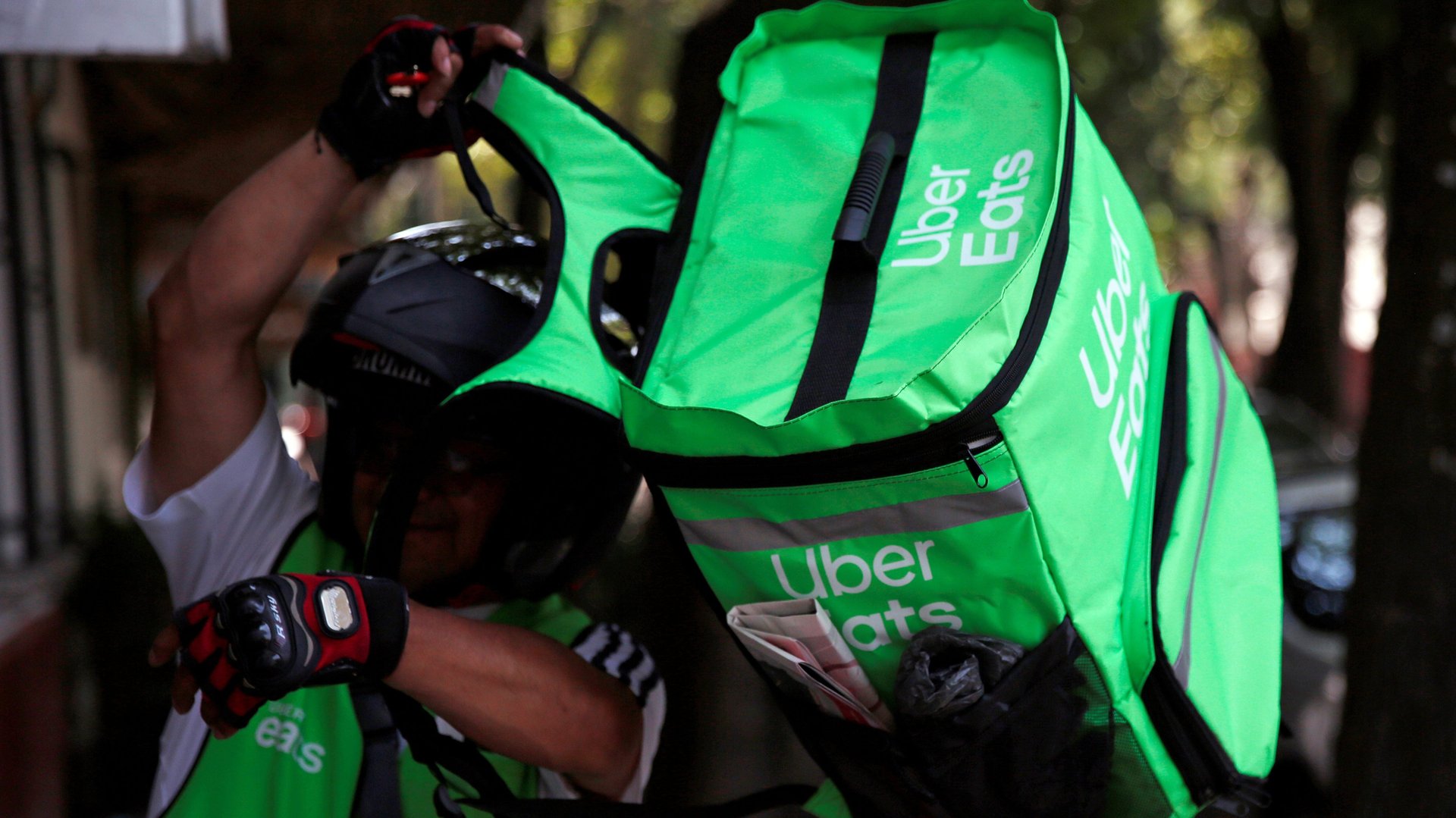Gig jobs are suddenly looking more secure amid coronavirus
Before the coronavirus crisis started to hit the US, on-demand companies were grappling with how to provide more benefits for workers. Now, as more people adjust to staying indoors to reduce the spread of coronavirus, demand for delivery services has started to rise and with it, opportunities for gig work.


Before the coronavirus crisis started to hit the US, on-demand companies were grappling with how to provide more benefits for workers. Now, as more people adjust to staying indoors to reduce the spread of coronavirus, demand for delivery services has started to rise and with it, opportunities for gig work.
Amazon announced this week that it will hire another 100,000 workers in the US and raise pay for workers in the US, Canada, and Europe. Delivery food services Postmates, Grubhub, Uber Eats, and DoorDash are seeing higher demand for their services. A banner atop DoorDash’s site reads: “We appreciate your patience as we are experiencing long-wait times due to COVID-19.”
With restaurant workers finding themselves with fewer hours and lost wages, DoorDash stated yesterday that it will be creating a “priority access program” to help workers at their restaurant partners sign up as delivery workers, “enabling them to meet their financial needs until their jobs return to normal.”
“This crisis is really a breakout moment for gig companies and for delivery companies in particular,” says Julia Pollak, an economist at ZipRecruiter. “That shift to e-commerce, which was already happening very rapidly, is just going to accelerate.”
Demand for workers in transportation and storage in the US appears to be holding strong so far amid the pandemic. Food delivery and package delivery driver jobs rose in the second week of March and are likely to rise further as people shift more of their shopping online, according to Pollak. Job postings in the US related to food delivery have risen 78% from 2017, and for transportation and storage 36%, ZipRecruiter data shows. Overall, the largest share of the gig economy is in the transportation industry.
Gig work, with its lack of benefits like health insurance, is often perceived as being precarious. But this public health crisis has forced companies to address the well-being of workers across its ranks.
Amazon has established a relief fund to provide its Flex drivers with two weeks of pay if they’re quarantined or diagnosed with Covid-19. Uber has expanded sick pay to drivers who are diagnosed or quarantined. Similar policies have been announced by DoorDash. Postmates, DoorDash, and UberEats are offering “contactless” delivery to help mitigate the spread of coronavirus, about a month after KFC and Pizza Hut launched contactless delivery service in China.
“In short, gig jobs are becoming relatively more attractive and secure in some ways,” says Pollak.
About a third of roughly 200 drivers surveyed this week by the Rideshare Guy blog found that drivers are considering shifting to driving for a food delivery service, as demand for food delivery continues to rise.
Still, unemployment is already starting to rise. The left-leaning Economic Policy Institute estimates that at least 3 million US jobs may be lost by summer. The US Travel Association estimates that the US economy is projected to lose 4.5 million jobs due to travel declines this year, pushing the unemployment rate to 6.3% in the second quarter.
Gracie Lifschutz, a sales associate at a retail store in downtown Manhattan, received a call from her manager last Friday saying that she did not need to come for her shifts at least through March 28. While she has a safety net that can cover her expenses for the next few months, she says she hadn’t been planning to use it so soon.
Over the weekend, Lifschutz, 24, signed up on the gig platform Fiverr, seeking writing and consulting services. The current climate has made her see how the “pros of gig work stands out even more,” she told Quartz. “At a time like this where everyone is working from home, it’s far easier to work from home if you have steady gig work depending on your industry,” she says. “Others who do digital work that is remote-based have no problem continuing with their lives as it existed before.”
While Fiverr won’t comment on exact numbers given that they are changing constantly, the company says it has started seeing an “uptick in people around the world opening gigs on the platform.” (Just last week, a spokesperson told Forbes that it hadn’t yet seen any such change.)
It’s hard to say when the surge in gig work will slow down, or whether these benefits for these workers will continue to be provided post-crisis. But the crisis may put the gig economy in a different lens.
Most full-time employees in the US are at-will employees and can be laid off with little notice and no severance pay for any reason or none at all. By contrast, gig workers are typically fired only for workplace violations. In regard to it being harder to lose a gig job, “many workers will discover that now,” says Pollak.
But the crisis may also motivate risk-averse workers to seek roles that provide a steady income with employer-sponsored benefits, says Dave Berndt, a senior human resources advisor at HR outsourcing services G&A Partners. “It could create this impetus for people to say, you know, I really want to get back into that corporate environment or where my benefits give me more of a safety net,” he says.